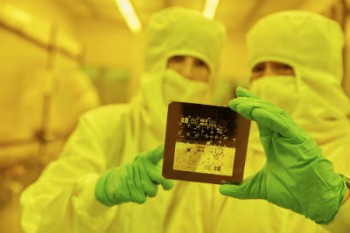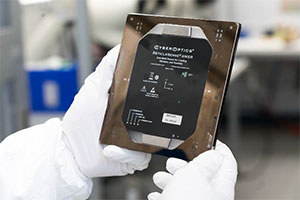Why is it critical to monitor Relative Humidity (RH) in semiconductor tool environments?
What are the top issues RH can cause?
Measuring, monitoring and managing relative humidity in a semiconductor clean room is critically important. When RH deviates out of required levels, it can be costly. Being out of parameters, either too high or too low, can result in low yields, tool downtime, tool degradation, scrap or contaminated wafers, among other issues.

What can happen when RH is too high?
As an example, in the photolithographic area, there is a risk of degradation, as photoresist processes have very tight parameters and are highly sensitivity to humidity.
When RH is too high, the risk of particle adhesion to substances such as silicon increases. The ability to manage resist stability, adhesion and dimensional precision can be more challenging. Photoresist viscosity can quickly decrease with higher RH, affecting the thickness of the resist film using a fixed coating recipe.
Metals can corrode, including equipment, and condensation and water absorption issues can arise when RH is too high. It can intensify water absorption, increasing resist swelling after a bake cycle. When developer solvents are sprayed onto a wafer surface, the solvents evaporate quickly, cooling the wafer enough to condense moisture from the air, potentially causing a change in the developer characteristics and absorption onto the semiconductor wafers.
Higher RH levels can foster the growth of various biological contaminants. Bacteria, viruses, mold can spread and multiply when relative humidity is greater than 60 percent.
What can happen when RH is too low?
The build-up of static electrical charge and the consequent discharges can be detrimental to semiconductor environments.
What can semiconductor fabs do to address these issues?
Accurately measuring relative humidity is the initial step to control. Selecting the most appropriate sensors to monitor and measure RH is the first item of business in ensuring trouble-free operations.

At SPIE Photomask and EUV Lithography, CyberOptics will demonstrate the ReticleSense Auto Multi Sensors (AMSR) that measure leveling, vibration, and relative humidity (RH) in an all-in-one wireless real-time device. The AMSR speeds equipment qualification, shortens equipment maintenance cycles and lowers equipment maintenance expenses. Multiple measurements can be captured and monitored in all locations of the reticle environment, saving equipment engineers or process engineers’ time and expense.
 Back
Back
 Back to News
Back to News





